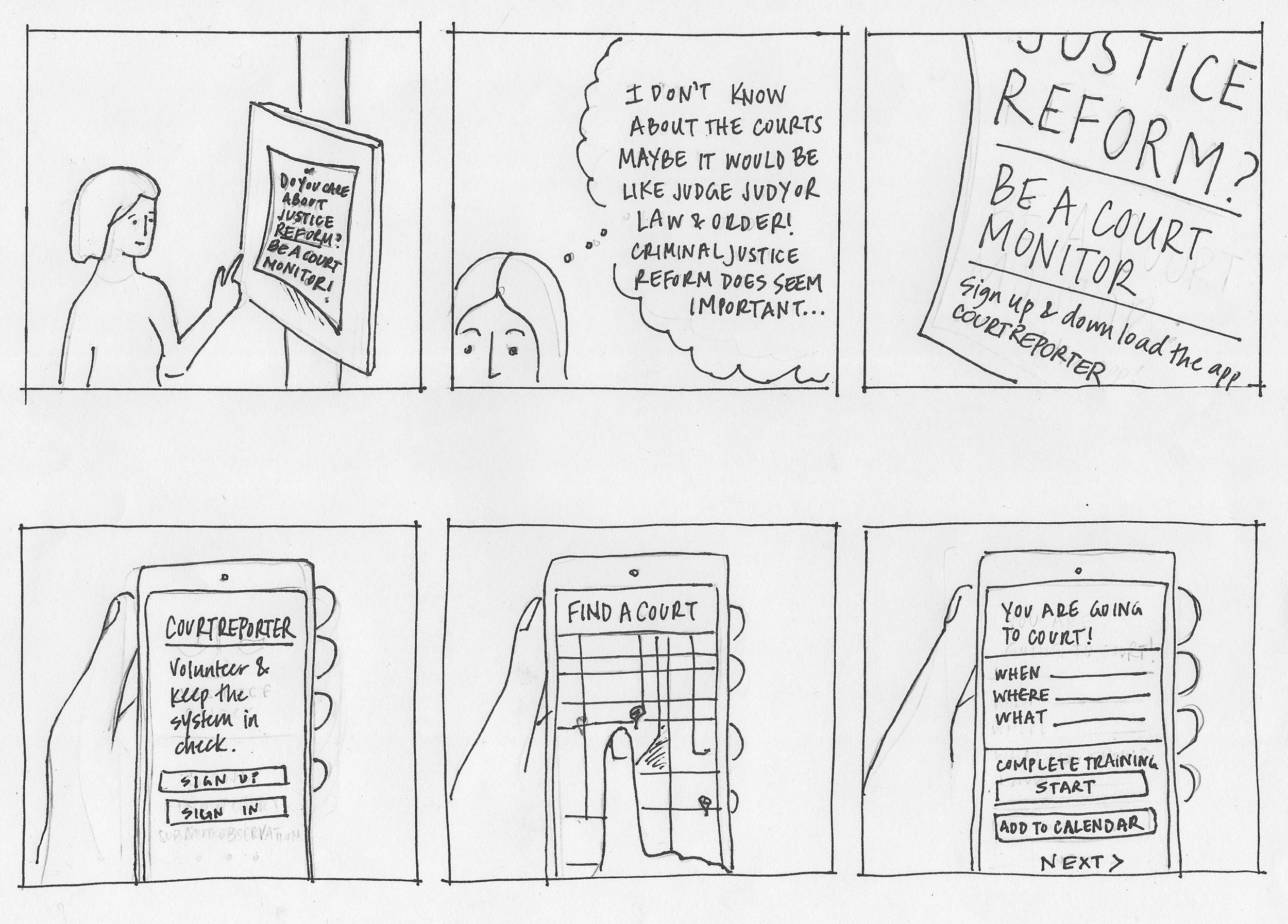Digitizing court monitoring
Let me offer a disclaimer right off the bat: Use of mobile devices in courtrooms is currently prohibited, which throws a real wrench in what I'm about to propose. Nevertheless, I think there is something to gain by making the act of citizen court monitoring more accessible and more easily processed. The simplest goal of this monitoring is to remind judges and other court workers that they are responsible to the general public in their decisions. The secondary goal is to advance the idea of procedural justice—that if the system is transparent and appears fair people will be far likelier to comply with rulings—which may be one of the most effective and cheapest ways to improve the criminal justice system. Simply getting judges, lawyers, and other court personnel to be sure to explain terms and decisions to defendants, to look people in the eye, and to show up on time can increase the extent to which the system is perceived as trustworthy.
Inspired by a program run by the Fund for Modern Courts, I designed Court Report, a platform that streamlines and digitizes citizen court monitoring. Targeted towards university students, Court Report recruits volunteers to sign up, go through an online training, and locate a public hearing to observe. Research has shown that by making the process fairer, we can increase compliance with outcomes and laws, and build public trust. The app collects data on key metrics of procedural justice in the courthouse, such as whether the judge is on time, makes eye contact with the defendant, and explains things in non-legal language. Digital submission of observations would facilitate the data being shared with the court, local government, and the public.




